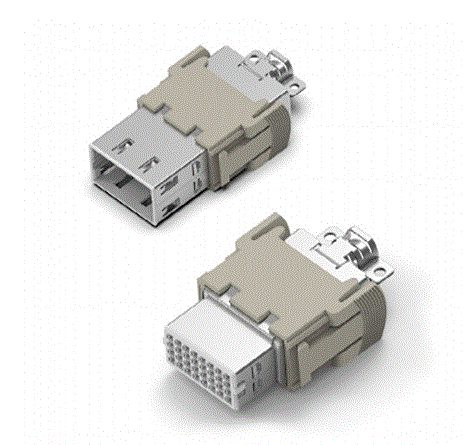Manufacturers
- Abracon
- Adam Tech
- Aerospace, Defense & Marine
- Agastat
- AIC
- AKM Semiconductor
- Alcoswitch
- Allegro
- Alps Electric
- Altera
- AMI Semiconductor
- AMP
- ams
- Analog Devices (ADI)
- Aptina Imaging
- Atmel
- Avago / Broadcom
- AVX
- Axicom
- Bccomponents
- Beyschlag
- BI Technologies
- Bourns Inc.
- Bowei Integrated Circuits
- Bridgelux
- Buchanan
- California Micro Devices
- Catalyst Semiconductor
- CGS
- Cirrus Logic
- Citizen Electronics
- CML Microcircuits
- Coiltronics
- Cooper Bussmann
- Corcom
- Core Logic
- Cree
- CSR PLC
- CTS
- Cypress Semiconductor
- Dale
- Data Image
- Deutsch
- Diodes Incorporated
- DOMINANT Opto Technologies
- E-T-A
- Eaton
- ECS
- Edison Opto
- Elcon
- EPCOS
- Epistar
- Epson
- Everlight Electronics
- Exar
- Fairchild Semiconductor
- FCI
- Freescale Semiconductor
- Fremont Micro Devices (FMD)
- Fujitsu Semiconductor
- Fulltech Electric
- General Semiconductor
- Harvatek
- Holsworthy
- Hsuan Mao Technology
- IDT
- Infineon Technologies
- Innolux
- International Rectifier (IR)
- Intersil
- IRC
- ISSI
- IXYS-IC
- Jing Cheng Electronical
- JL World
- Johanson Dielectrics
- Johanson Technology
- JRC / NJR
- JST
- KEC
- Kilovac
- Kingbright
- Kyocera Industrial Ceramics
- LEDiL
- Linear Technology / ADI
- Lite-On Technology
- Littelfuse
- Lumex
- Lumileds
- Luminary Micro
- Luminus Devices
- Macronix
- Maojwei / ZJPT
- Maxim Integrated
- MCC
- Mean Well Enterprises
- Microchip Technology
- Micron
- Microsemi
- Mini-Circuits
- Molex
- Murata Manufacturing
- Murata Power Solutions
- MWT
- National Semiconductor
- Nichicon
- Nippon Chemi-Con
- NJR / JRC
- NVE
- NXP Semiconductors
- OEG
- Omnivision
- ON Semiconductor
- Optek Technology
- Optrex
- OSRAM Opto Semiconductors
- OTAX
- Panasonic
- Peregrine(pSemi)
- Potter & Brumfield
- Power Integrations
- PowerStor
- Preci-Dip
- Prewell
- Products Unlimited
- Pulse Electronics
- PulseCore Semiconductor
- Qorvo
- Raychem
- Renesas Electronics
- RFMD
- Richtek Technology
- ROHM Semiconductor
- Rubycon
- Samsung Electro-Mechanics
- Samsung Semiconductor
- Schaffner
- Schrack
- Seiko Instruments, Inc. (SII)
- Semtech
- Sensata
- Seoul Semiconductor
- Sfernice
- Sharp Display
- Sharp Microelectronics
- Silicon Labs
- Siliconix
- Skyworks Solutions
- SoniCrest / JL World
- Spansion
- Sprague
- Stanley Electric
- STMicroelectronics
- Sunny Electronics
- Susumu (SSM)
- Taimag
- Taiyo Yuden
- TDK
- TDK-Lambda
- TE Connectivity
- Teccor
- Texas Instruments (TI)
- Thin Film
- Tianma Micro-electronics
- TOCOS
- TOKO
- Toshiba Electronic Components
- TT Electronics
- Tusonix
- TXC
- Tyntek
- Vishay
- Vishay Precision Group
- Vitramon
- Walsin Technology
- Weidmuller
- Welwyn
- Wickmann
- Winbond
- Xilinx
- Yageo
- Zetex Semiconductors
- ZJPT / Maojwei
News
Featured Product: HDC Hybrid Shielding Module
2021-08-30 | Return TE Connectivity extends Heavy Duty Connector range with high-density compact unit suited for robotics and automation applications
TE Connectivity extends Heavy Duty Connector range with high-density compact unit suited for robotics and automation applicationsTE Connectivity (TE), a world leader in connectivity and sensors, is adding to its already-comprehensive range of Heavy Duty Connectors (HDC) with the HDC Hybrid Shielding Module. This is a new hybrid insert that connects power and signal in a single compact, high-density format.
Like TE’s other HDCs, the HDC Hybrid Shielding Module HK-HDW3/1/1-23/16/47 delivers optimal, reliable performance in even the harshest industrial environments. It’s suitable for use with IP65 and IP68/IP69K hoods and housings, and with its high level of shielding against electromagnetic interference (EMI), the HDC Hybrid Shielding Module is especially well-suited for industrial applications — like small robotics and automation equipment — that demand electromagnetic compatibility (EMC).
“The new HDC Hybrid Shielding Module provides a valuable extension to our Heavy Duty connector portfolio,” says Jason Wang, Product Manager at TE. “Its high density, compact unit provides customers another option for wire-to-board, wire-to-wire and heavy-duty cable-to-cable applications.”
Inside a small H10B hood with EMI shielding, the new HDC Hybrid Shielding Module connector combines 47 positions for signal, 16 positions for power at 300V, and 23 positions at 400V. TE is also keeping cable assembly costs low with the HDC Hybrid Shielding Module by integrating compatibility with semi-automatic and fully automatic crimping equipment for the dynamic contacts; existing crimp tools can be used for internal and interface connections. The Shielding Module serves to increase the reliability of HDCs, including TE’s dynamic range.
Information on HDCs with Dynamic Inserts
Due to its box shape design and large performance area with three contact points, HDC Dynamic Contacts ensure uninterrupted electrical connection and minimize the possibility of failure caused by vibrations in an industrial environment. HDC Dynamic Contacts can be assembled with the use of semi-automated or fully automated crimping processes. This offers significant advantages for the stability of the assembly process and repeatability of the crimp itself. Visual inspection is replaced by in-process monitoring methods, which is more effective than usual visual checks. In-process monitoring methods ensure that each wire termination meets crimp force specifications. In addition, compared to the industry average time required to crimp a loose piece contact, semi-automated crimping tooling reduces the required time by half. The manual crimp process is still recommended while processing lower volumes, with use of the optional dynamic loose piece contacts.
Source: http://www.te.com/





